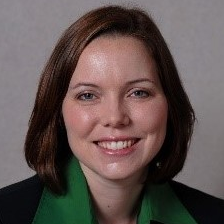Advances in Experimental and Computational Research on Reinforced Concrete Structures
A special issue of Buildings (ISSN 2075-5309). This special issue belongs to the section "Building Structures".
Deadline for manuscript submissions: closed (30 January 2024) | Viewed by 2169
Special Issue Editors
Interests: behavior and design of reinforced concrete structures; earthquake engineering; building progressive collapse
Interests: disproportionate collapse; extreme events on concrete structures; innovative materials
Interests: numerical and constitutive modeling of reinforced concrete; performance assessment of concrete infrastructure; concrete structure responses to impulsive loading
Special Issue Information
Dear Colleagues,
We are pleased to invite you to submit a manuscript to a Special Issue of Buildings, “Advances in Experimental and Computational Research on Reinforced Concrete Structures”. This Special Issue aims to provide a venue for communicating the most recent results of original experimental or computational research on reinforced concrete (RC) building structures. The topics of interest are broad, covering the performance of structural components/systems under hazardous conditions (e.g., strong earthquakes, blasts, and corrosions), mechanical modeling and numerical simulation approaches, the structural application of unconventional materials, and performance-based design approaches. High-quality case studies and critical literature reviews are also welcome.
Prof. Dr. Ying Tian
Dr. Sarah Orton
Dr. Trevor Hrynyk
Prof. Dr. Liping Wang
Guest Editors
Manuscript Submission Information
Manuscripts should be submitted online at www.mdpi.com by registering and logging in to this website. Once you are registered, click here to go to the submission form. Manuscripts can be submitted until the deadline. All submissions that pass pre-check are peer-reviewed. Accepted papers will be published continuously in the journal (as soon as accepted) and will be listed together on the special issue website. Research articles, review articles as well as short communications are invited. For planned papers, a title and short abstract (about 100 words) can be sent to the Editorial Office for announcement on this website.
Submitted manuscripts should not have been published previously, nor be under consideration for publication elsewhere (except conference proceedings papers). All manuscripts are thoroughly refereed through a single-blind peer-review process. A guide for authors and other relevant information for submission of manuscripts is available on the Instructions for Authors page. Buildings is an international peer-reviewed open access monthly journal published by MDPI.
Please visit the Instructions for Authors page before submitting a manuscript. The Article Processing Charge (APC) for publication in this open access journal is 2600 CHF (Swiss Francs). Submitted papers should be well formatted and use good English. Authors may use MDPI's English editing service prior to publication or during author revisions.
Keywords
- reinforced concrete
- structural performance
- mechanical modeling
- numerical simulation
- unconventional material








